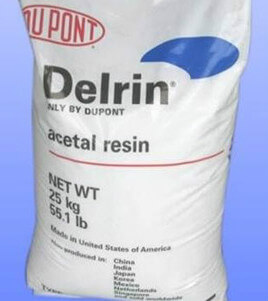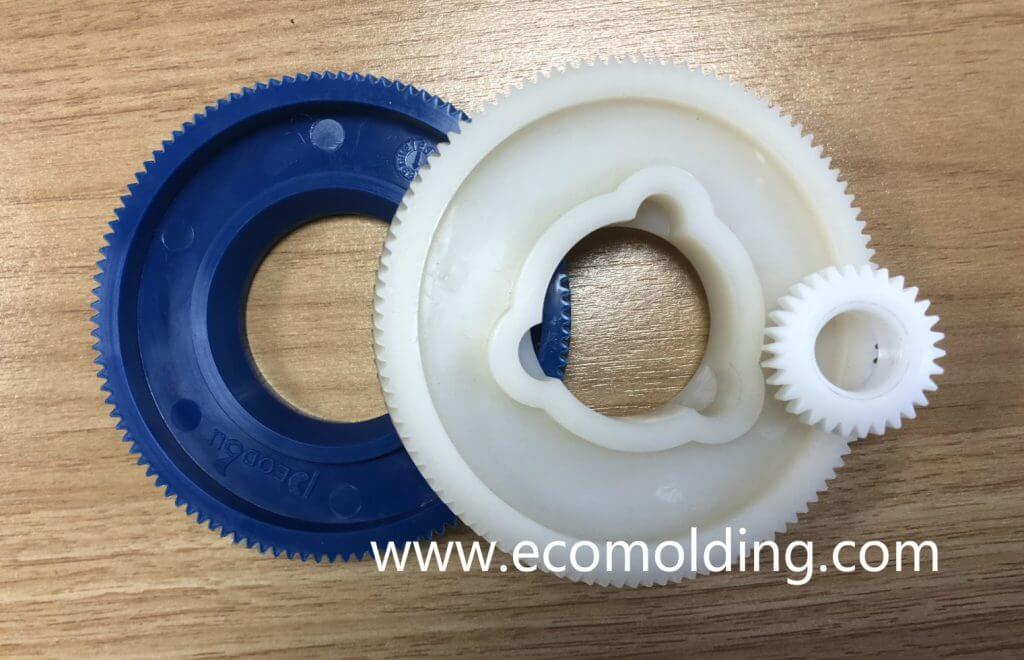What is the POM injection molding plastic material?
Polyoxymethylene (POM), also known as acetal, polyacetal, and polyformaldehyde, is a naturally white semi-crystalline engineering thermoplastic used in production of precision parts that require high stiffness, low friction, excellent dimensional stability, as well as high resistance to abrasion, heat, water absorption and organic chemical compounds, such as hydrocarbons. It is a plastic material featuring a very high tensile strength, with an outstanding resistance to creep, allowing it to bridge the gaps of material properties between most of the plastics and metals. Typically, the applications of POM include small size gears, home electronics, molded plastic zippers, medical equipment, and components of furniture like the plastic feet of a couch.
Why is POM so frequently used?
In applications that require low friction, POM is an especially useful plastic material. We choose to use POM when we need to produce strong, slippery and flexible parts (or maybe plastic parts with just one of these properties). Often, we employ the POM injection molding material to realize the reduction of friction. By nature, POM is such a slippery material, that it is a perfect fit for production of sliding mechanisms and gears. Just imagine the plastic feet of a couch sliding on the wood floor in your living room. It is very likely that these “feet” are POM parts made through the plastic injection molding process.
What other names does POM have?
POM is often referred to by several different names, either technical or industrial, among which the most commonly used one is Acetal. Other technical names are shown below:
- Polyformaldehyde
- Polyacetal
- Polyoxymethylene glycol
- Polymethylene glycol
Industrial names are adopted to indicate the slightly varied formulas for basically the same substances, and usually differ by the chemical firm who is involved in their production process. Please see the following for examples:
- Celcon®: the POM Copolymer plastic made by Ticona (a subsidiary of Celanese located in Florence, Kentucky, the US);
- Delrin®: the POM Homopolymer plastic made by DuPont, located in Wilmington, Delaware, the US;
- Duracon®: the POM Copolymer plastic made by Polyplastics, a chemical company located in Taiwan, China;
- Kepital®-POM: the POM Copolymer plastic made by Korea Engineering Plastics Company (KEP) located in Seoul, Korea;
- Hostaform®: the POM Copolymer plastic made by the Celanese Corporation, Ramtal, Irving, Texas, the US;
- Tecaform®: the POM Copolymer plastic made by Ensinger Company located in Washington, Pennsylvania, the US;
- Tepcon®: the POM Copolymer plastic made by Polyplastics located in Taiwan, China;
- Ultraform®: the POM Copolymer plastic made by BASF located in Ludwigshafen, Germany.
As a trademarked name of DuPont, the POM Homopolymer is often referred to as Delrin to indicate the specific resin material. Usually sold in the form of rods or sheets, Delrin is thought to be one of the most commonly used types of POM in the US market. It is the one and only Homopolymer on the list.

Is POM toxic or harmless?
The answer is no when the material is in a solid form. As a matter of fact, POM is frequently applied to food processing equipment and manufacturing. However, when absorbed and / or inhaled into the skin or eyes in the vapor or liquid form, POM can be toxic to people. In particular, you should be careful and follow the operation instructions closely when handling molten polymer.
What properties does the POM injection molding process?
POM is a strong and flexible material that shows a great resistance to creep, outstanding dimensional stability and impressive impact strength even at very low temperature conditions. With regard to grades, POM is either copolymers or homopolymers. Homopolymers usually feature better ultimate tensile strength, resistance to fatigue and ideal hardness, but it is not easy to process. Comparatively speaking, copolymers are better in terms of thermal stability, resistance to chemicals and processability. What they have in common is that both of them are crystalline and absorbs little moisture.
With regard to processing temperature, copolymers can be used continuously under temperature conditions of up to 100 degrees Celsius (or 212 degrees Fahrenheit); homopolymers are slightly more resistant to high temperatures. A great number of grades of the POM material are available in the market, allowing customization for different application projects.
Due to the relatively high crystallinity level of POM injection molding materials, higher shrinkage levels of 0.02 – 0.035 mm is caused. On reinforced grades of POM, differential shrinkage can be observed.
Conditions of the POM Injection Molding Process
| Drying | Drying is not usually required for POM, but it is better to store the material in a dry environment. |
| Melting Point | 180 – 230 degrees Celsius (or 356 – 446 degrees Fahrenheit) for homopolymer; 190 – 210 degrees Celsius (or 374 – 410 degrees Fahrenheit) for copolymer. |
| Mold Temperature | 50 – 105 degrees Celsius (or 122 – 221 degrees Fahrenheit); precision molding requires higher mold temperatures, because it can reduce post-molding shrinkage. |
| Plastic Injection Molding Pressure | 70 – 120 MPa |
| Plastic Injection Molding Speed | Medium to High |
